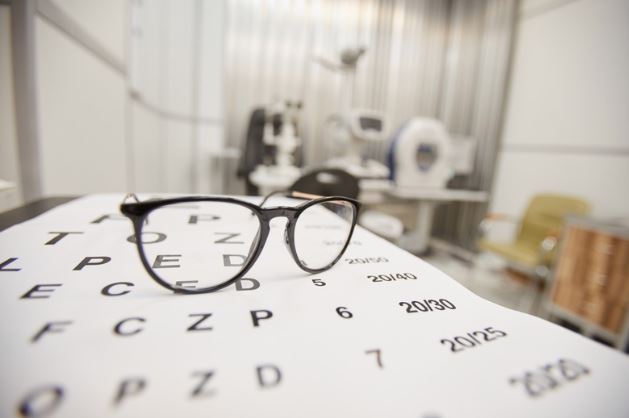Add-on eye prescriptions, also known as supplementary prescriptions, are additional corrective lenses or adjustments to an existing eye prescription. These prescriptions are often necessary for individuals with specific vision needs that cannot be fully corrected with standard single prescriptions. Add-on prescriptions can enhance visual clarity, address multifocal needs, or provide additional correction for astigmatism, presbyopia, or other complex vision issues.
Understanding Add-On Eye Prescriptions
Add-on eye prescriptions are tailored adjustments that complement an existing prescription. They are commonly used in multifocal and progressive lenses, where different areas of the lens have varying corrective strengths. This type of prescription is essential for individuals who need different corrections for near, intermediate, and far distances.
Why Add-On Prescriptions Are Necessary
The primary reason for add-on prescriptions is to provide comprehensive vision correction that a single prescription cannot achieve. Here are some common scenarios where add-on prescriptions are beneficial:
- Presbyopia: Age-related difficulty in focusing on close objects, typically corrected with multifocal lenses.
- Astigmatism: Irregular curvature of the cornea, often requiring toric lenses for precise correction.
- Post-Surgery Adjustments: Enhancements after surgeries like LASIK to fine-tune vision.
Key Benefits of Add-On Eye Prescriptions
- Improved Visual Acuity: Enhanced clarity for specific vision tasks.
- Customized Vision Correction: Tailored to individual needs, ensuring optimal vision at all distances.
- Adaptability: Can be adjusted as vision changes over time.
Types of Add-On Eye Prescriptions
There are several types of add-on prescriptions, each designed to address specific vision requirements. Below is a detailed table highlighting the various types of add-on prescriptions and their uses.
| Type of Add-On Prescription | Description | Use Case |
|---|---|---|
| Multifocal Lenses | Lenses with multiple corrective zones for near, intermediate, and far vision | Presbyopia |
| Toric Lenses | Lenses designed to correct astigmatism by compensating for irregular corneal shape | Astigmatism |
| Prism Lenses | Lenses that help align vision for individuals with binocular vision disorders | Binocular vision disorders |
| Blue Light Filtering Lenses | Lenses that filter out blue light from digital screens | Reducing digital eye strain |
| Progressive Lenses | Seamless transition between multiple prescription strengths | Comprehensive correction for all distances |
How Add-On Prescriptions Work
Add-on prescriptions are typically implemented in two ways: within a single lens or as an additional lens layer. Multifocal and progressive lenses integrate multiple prescriptions into one lens, while add-on lenses might be placed over an existing pair of glasses.
Determining the Need for Add-On Prescriptions
Optometrists use various tests to determine if an add-on prescription is necessary. These tests include:
- Refraction Tests: To measure the eye’s focusing ability.
- Corneal Topography: To map the curvature of the cornea.
- Visual Acuity Tests: To assess clarity at different distances.
In-Depth Questions Related to Add-On Eye Prescriptions
How do multifocal lenses work in add-on eye prescriptions?
Multifocal lenses in add-on prescriptions work by incorporating multiple corrective zones within a single lens. These zones are tailored to correct vision at different distances—near, intermediate, and far. This is particularly beneficial for individuals with presbyopia, a condition that affects near vision due to aging. The multifocal design allows the wearer to seamlessly switch focus from reading a book to looking at a distant object without changing glasses.
Multifocal lenses come in two main types:
- Segmented Multifocals: These have distinct zones separated by visible lines, commonly seen in bifocals and trifocals.
- Progressive Multifocals: These offer a gradual transition between different prescription strengths, providing a more natural visual experience.
To learn more about the advancements in LASIK technology that can complement multifocal lenses, check out the newest LASIK technology.
What are the benefits of toric lenses for astigmatism?
Toric lenses are specifically designed to correct astigmatism, a condition caused by an irregularly shaped cornea or lens. Unlike regular spherical lenses, toric lenses have different powers in different meridians of the lens to compensate for the uneven curvature of the eye.
Key benefits of toric lenses include:
- Precise Correction: Custom-tailored to the individual’s specific astigmatism needs.
- Stable Vision: Designed to stay in place on the eye, providing consistent vision correction.
- Versatility: Available in both glasses and contact lenses.
For individuals considering LASIK surgery, understanding what prescription is too high for LASIK can provide additional insights into whether toric lenses might be a better option.
How can add-on prescriptions improve post-LASIK surgery outcomes?
Add-on prescriptions can significantly enhance vision for individuals who have undergone LASIK surgery. While LASIK effectively corrects many vision problems, some patients may still experience minor refractive errors post-surgery. Add-on prescriptions can address these residual issues, ensuring optimal vision.
Benefits include:
- Fine-Tuning Vision: Small adjustments to correct residual refractive errors.
- Enhanced Comfort: Reducing eye strain and improving overall visual comfort.
- Extended Correction: Helping maintain clear vision as the eyes age or change over time.
Are there specific tests to determine the need for add-on prescriptions?
Yes, several tests help optometrists determine the need for add-on prescriptions. These tests provide a comprehensive understanding of an individual’s vision and ensure precise correction.
Common tests include:
- Refraction Tests: Measure the eye’s ability to focus light, determining the correct prescription.
- Corneal Topography: Maps the curvature of the cornea, identifying irregularities.
- Visual Acuity Tests: Assess clarity of vision at various distances.
- Binocular Vision Tests: Check how well the eyes work together, which is crucial for conditions like strabismus.
Regular eye exams are essential to monitor vision changes and update prescriptions as needed. For more details on when LASIK might be medically necessary, visit when is LASIK medically necessary.
Conclusion
Add-on eye prescriptions play a crucial role in providing comprehensive and precise vision correction. Whether you need multifocal lenses for presbyopia, toric lenses for astigmatism, or additional correction post-LASIK, these prescriptions are tailored to meet your specific needs. At M LASIK Center, we are dedicated to helping you achieve the best possible vision.
If you’re experiencing vision issues or need to update your prescription, don’t hesitate to contact us. Our expert team is here to assist you in finding the perfect solution for your eyes.
By thoroughly understanding the nuances of add-on eye prescriptions and utilizing the latest technology, we ensure that your vision is as clear and comfortable as possible. Make an appointment with M LASIK Center today and take the first step towards better vision.


